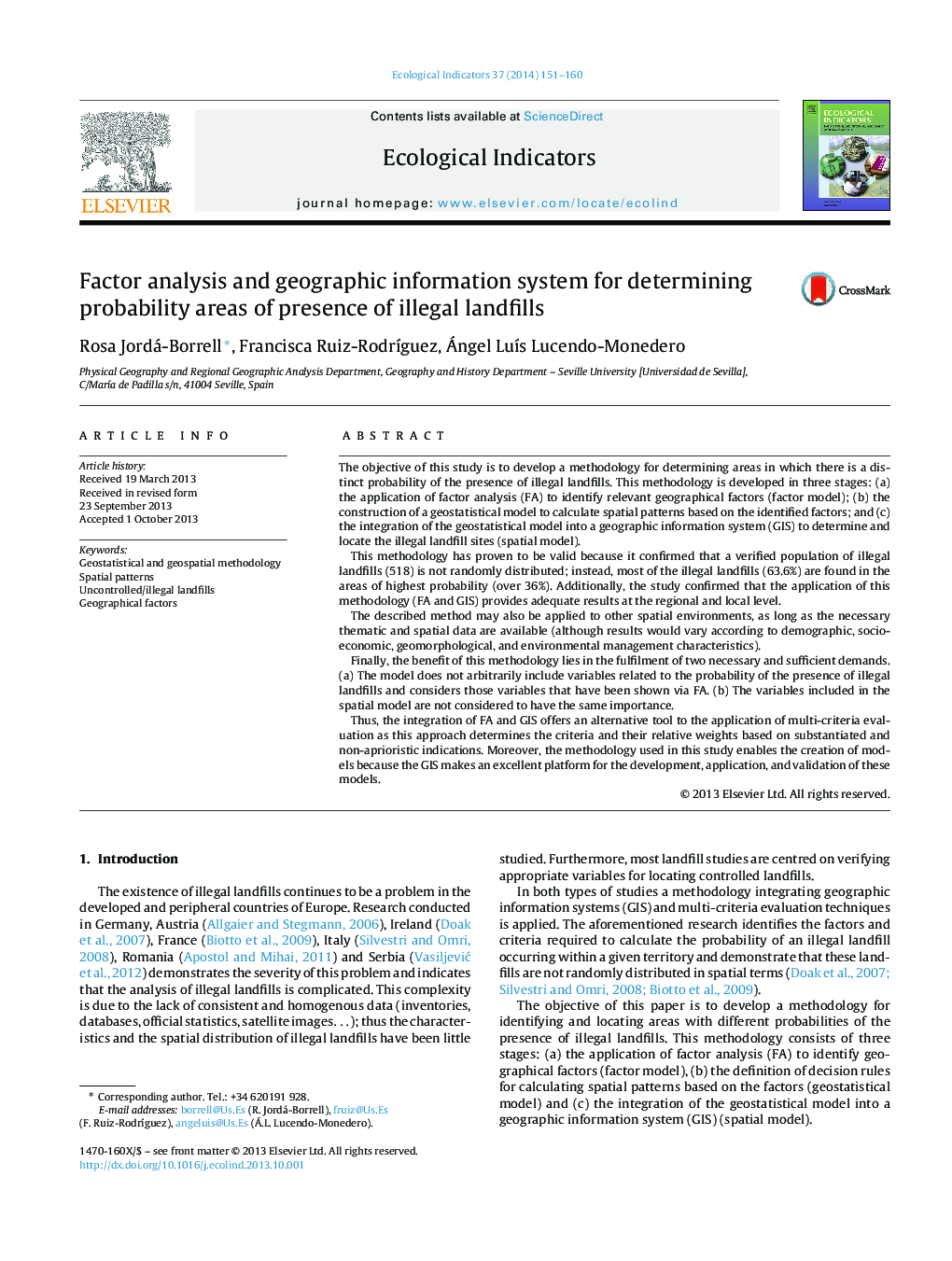| Article ID | Journal | Published Year | Pages | File Type |
|---|---|---|---|---|
| 4373260 | Ecological Indicators | 2014 | 10 Pages |
•We develop a methodology to identify probable illegal landfill areas.•The methodology consists of implementing a factor analysis using a GIS geostatistical model.•This model may be applied to other regions and territorial issues.•The results of this methodology are corroborated using the verification of each spatial pattern.•The benefit of this method is that the model does not arbitrarily include variables, and the included variables do not carry the same weight.
The objective of this study is to develop a methodology for determining areas in which there is a distinct probability of the presence of illegal landfills. This methodology is developed in three stages: (a) the application of factor analysis (FA) to identify relevant geographical factors (factor model); (b) the construction of a geostatistical model to calculate spatial patterns based on the identified factors; and (c) the integration of the geostatistical model into a geographic information system (GIS) to determine and locate the illegal landfill sites (spatial model).This methodology has proven to be valid because it confirmed that a verified population of illegal landfills (518) is not randomly distributed; instead, most of the illegal landfills (63.6%) are found in the areas of highest probability (over 36%). Additionally, the study confirmed that the application of this methodology (FA and GIS) provides adequate results at the regional and local level.The described method may also be applied to other spatial environments, as long as the necessary thematic and spatial data are available (although results would vary according to demographic, socioeconomic, geomorphological, and environmental management characteristics).Finally, the benefit of this methodology lies in the fulfilment of two necessary and sufficient demands. (a) The model does not arbitrarily include variables related to the probability of the presence of illegal landfills and considers those variables that have been shown via FA. (b) The variables included in the spatial model are not considered to have the same importance.Thus, the integration of FA and GIS offers an alternative tool to the application of multi-criteria evaluation as this approach determines the criteria and their relative weights based on substantiated and non-aprioristic indications. Moreover, the methodology used in this study enables the creation of models because the GIS makes an excellent platform for the development, application, and validation of these models.
